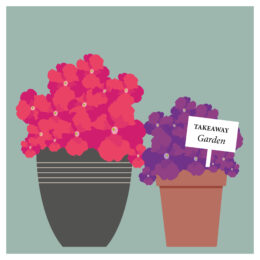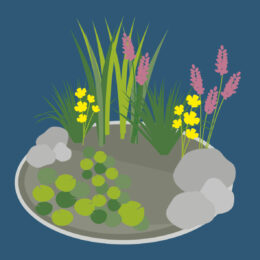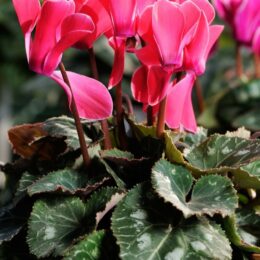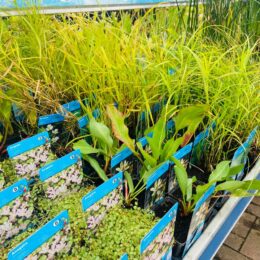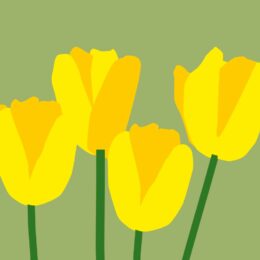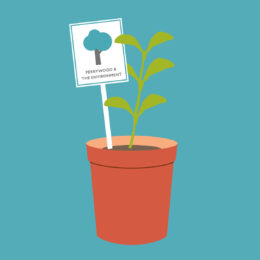Trees and woods have inspired many great writers from Lewis Carroll’s Alice in Wonderland and Enid Blyton’s The Faraway Tree series…to Shakespeare’s A Midsummer Night’s Dream…
I know a bank where the wild thyme blows,
where oxlips and the nodding violet grows,
quite over-canopied with luscious woodbine,
with sweet musk-roses and with eglantine.
So whether you are creating a fairy woodland garden to allow your children to dream in or a little shady area where you can relax and encourage wildlife then here are some steps to follow to create a woodland inspired spot…
Step 1 – Create the layers…
If you already have trees established…look for a shady spot where the canopy of established trees and larger shrubs can create a suitable focal point.
If you are starting your woodland garden from scratch then make a small copse of trees – plant 3 or 4 small trees close together maybe acers, rowan, holly or crab apple and a hawthorn which will provide shelter for small animals and birds as well as berries for food.
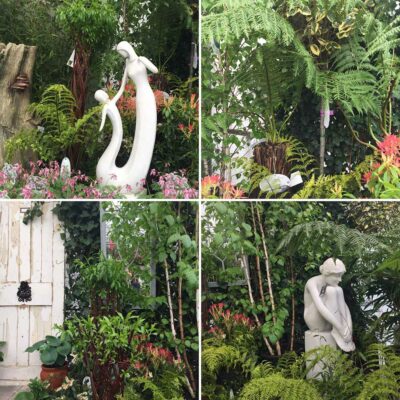
Use deciduous shrubs like the dwarf lilac to make up the layer beneath the canopy.

At the base, herbaceous plants and bulbs attract bees, butterflies and other insects as well as providing ground cover for smaller animals.
Step 2 – Plan your planting
Grass is suitable for the edge of the wood where you can mow easily. When planting trees and shrubs into grass, keep a 1m diameter circle around them clear of grass and weeds to allow them to establish without competition.
Use stepping stones and bark to create little paths in and out of the trees and shrubs. We sell Cambark Mini Nuggets Bark In-Store which is a great way to add a path.
Step 3 – Choosing your flowering plants
Use shade-loving plants and plant right up against the main stem of your shrubs to create the woodland feel like these herbaceous perennials….here are our favourite 3…
Stachys Officinalis (wood betony) is a wild flower that produces red-purple flowers June to September and perfect for bees.
Brunnera has large, heart-shaped leaves and sprays of small bright blue flowers April / May time.
Bergenia offers bold handsome evergreen foliage and stunning flowers.

To bring some scent into your woodland wonderland spring and autumn…why not plant a hardy perennial like the scented viola…choose a single colour and dot them along the borders to create maximum impact.

You could also add a sun loving plant on the edge of your woodland to encourage insects such as hoverflies and flower beetles. A good choice here is the Leucanthemum Vulgare (ox-eye daisy) which produces classic yellow and white daisy flowers June to August.
Biennial or short-lived perennials like the Digitalis Purpurea (Foxglove) also create a haven for bees and moth caterpillars. Plant in partial shade to give beautiful height and colour.
To ensure you have flowers throughout the seasons, you can think ahead and plant some beautiful bulbs in Autumn for next spring…we love…
Hyancinthoides non Scripta (English Bluebell) This classic bee-friendly woodland bulb provides carpets of nodding blue bells in May.

Anemone de Caen. Poppy like flowers pretty pinks, reds and purples will bring a spread of colour April / May time.

Finally, we would recommend Harvington hellebores interspersed with some snowdrops, miniature narcissi, and wintergreen ferns such as the shiny evergreen British native hart’s tongue fern (Asplenium scolopendrium) to make your woodland area shine throughout the year.

Our Top Tips:
- Establish which plants are most suitable by looking at what is growing in nearby woods.
- Plant broad-leaved native species of tree which support more biodiversity than conifers and introduced plants.
- When planting trees, be conscious that tree roots spread horizontally, so keep them away from built structures and other areas they might affect like ponds and streams.
- Collect fallen leaves in autumn to make leaf mould and stash in plastic sacks (pierced for ventilation) somewhere out of the way. A year later you will have a lovely supply of mulch.



